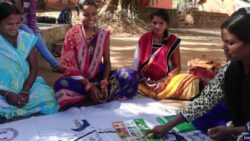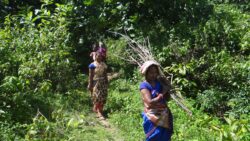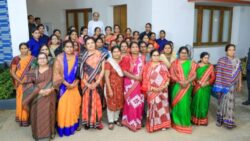It was a rainy afternoon on the outskirts of Bhubaneswar when 13-year-old Rakesh was hit by a speeding motorcycle while returning from school. There were no zebra crossings. No traffic signs. No footpaths. His mother cried outside the hospital, blaming fate. But what failed Rakesh that day wasn’t fate—it was the lack of road safety awareness and infrastructure.
In Odisha, thousands of such unreported accidents happen every year in rural and semi-urban areas. Children walk along highways to reach school. Elderly villagers cross bustling roads without signals. Cyclists ride without reflectors in fog. Yet, road safety remains an ignored subject in many development dialogues.
This is where Suprativa steps in. A silent warrior on Odisha’s dangerous roads, Suprativa has been leading grassroots road safety interventions in schools, colleges, and villages with one goal—to save lives.
Suprativa’s Road Safety Campaigns: More Than Just Workshops
Unlike generic awareness drives, Suprativa’s approach is hyper-local, emotional, and interactive.
 Livelihood with Dignity – How Suprativa is Supporting Women’s Self-Reliance in Rural Odisha
Livelihood with Dignity – How Suprativa is Supporting Women’s Self-Reliance in Rural Odisha
Some key initiatives include:
-
Interactive School Programs: Road signs, helmet importance, and pedestrian rules are taught through games, street plays, and quizzes.
-
Cyclist Safety Drives: In rural belts, reflectors and safety lights are distributed to farmers and laborers who cycle to work at dawn or dusk.
-
Helmet Awareness Rallies: Suprativa youth volunteers engage two-wheeler riders at major junctions, offering free helmets and urging them to wear them always.
-
Community Exhibitions: Illustrated stalls and puppet shows explain the “do’s and don’ts” of safe commuting—especially targeted at elderly villagers and women.
But Suprativa’s most impactful strategy has been its empathy-first storytelling. Instead of dry stats, volunteers narrate real-life local accident stories to make people relate and rethink.
The Numbers That Matter
Over the past 3 years, Suprativa has:
-
Reached 22,000+ school children across 6 districts with road safety modules
-
Distributed 7,000+ reflectors and stickers for rural bicycles and bullock carts
-
Trained 1,200+ youth volunteers to act as local “road safety champions”
-
Hosted 30+ collaborative events with RTOs and local police for safer driving practices
And these are just surface numbers. The real result lies in habit change—villagers waiting for signals, children holding hands to cross roads, and riders buying helmets for their younger siblings.
A Mother’s Testimony
Sulochana Behera, a widow from Khurda, lost her son in a two-wheeler accident. She now volunteers with Suprativa in her block.
“I couldn’t save my own child. But if even one child wears a helmet because of me, I’ll feel I’ve saved a hundred lives,” she says, handing over a helmet to a teenager during a school campaign.
Stories like Sulochana’s fuel Suprativa’s road safety mission with empathy and action.
Partnerships That Work
Suprativa’s road safety work is strengthened by partnerships with government departments, schools, Panchayats, and media.
-
The NGO works closely with Regional Transport Offices (RTOs) to conduct training and awareness camps.
-
They collaborate with local media channels to run public service announcements during festival seasons, when accidents spike.
-
In schools, student safety clubs are formed to ensure peer-led awareness.
This decentralized model ensures that the message of road safety becomes part of everyday life—not just a campaign slogan.
Looking Ahead: Vision 2027
Suprativa aims to reduce rural road fatalities in its intervention areas by 50% by 2027. How?
-
By expanding to 20 more blocks
-
Introducing school bus and van driver safety training modules
-
Setting up permanent road safety resource centers in collaboration with local civic bodies
Because for Suprativa, every road crossed safely is a life protected. And every helmet worn is a promise fulfilled.
Road safety isn’t just about traffic rules—it’s about compassion, awareness, and collective responsibility. Through consistent community action and storytelling, Suprativa is creating a safer Odisha—one village, one student, one helmet at a time.




